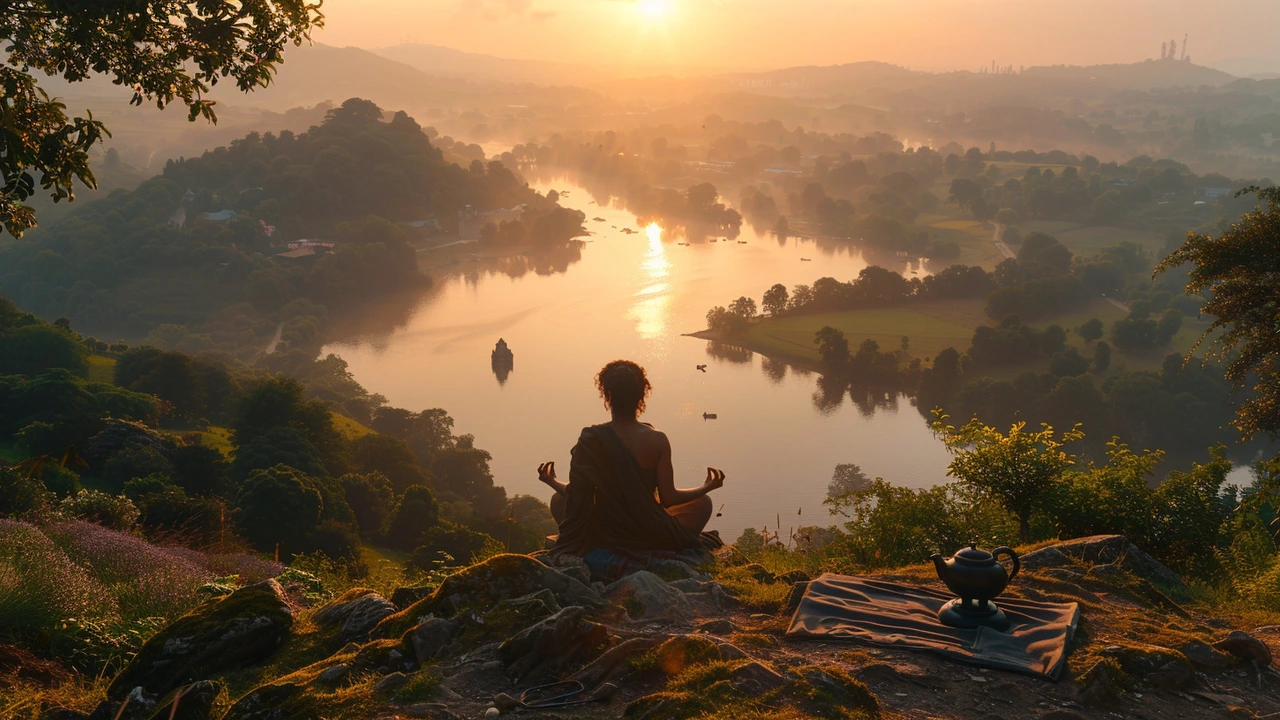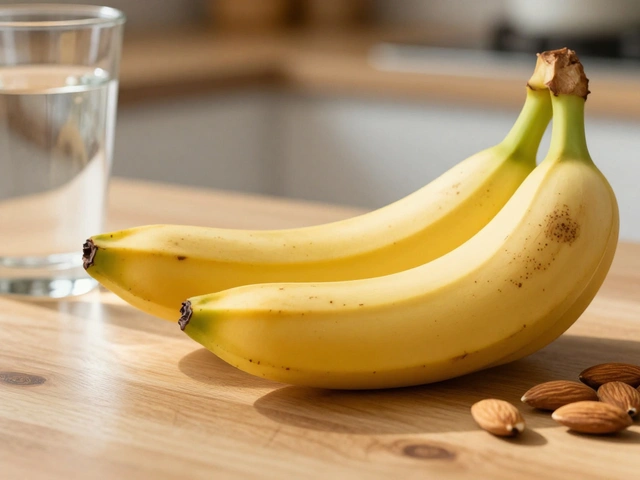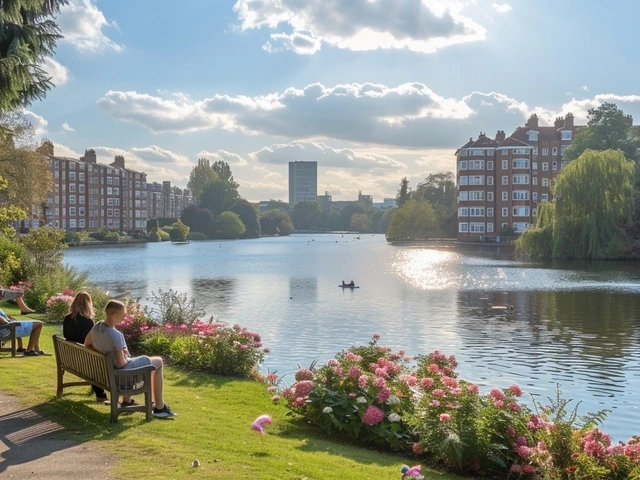In the hustle and bustle of modern life, finding ways to relax and recharge is not just a luxury—it's essential. Stress and anxiety can creep into every corner of our existence, affecting our health, mood, and productivity. Luckily, incorporating effective relaxation techniques into your daily routine can make a significant difference.
This guide will offer you practical methods to supercharge your life through relaxation. From deep breathing exercises that calm the nervous system to mindfulness meditation that centers your thoughts, we've got you covered. Understand the science behind these techniques, learn how to practice them, and discover their profound benefits.
- Understanding Relaxation
- Deep Breathing
- Progressive Muscle Relaxation
- Mindfulness Meditation
- Guided Imagery
Understanding Relaxation
Relaxation is a vital part of maintaining a healthy lifestyle, yet many people overlook its importance. At its core, relaxation is about giving your mind and body a break from stress. Chronic stress can lead to a variety of health problems, including heart disease, anxiety, and depression. When you allow yourself to relax, you activate your body's natural relaxation response, a state where your breathing slows, blood pressure drops, and stress hormone levels decrease.
It's not just about feeling good in the moment. Various studies have shown that people who practice relaxation techniques regularly experience long-term health benefits. According to the American Psychological Association, even brief relaxation exercises can produce significant reductions in stress and anxiety. This is because these techniques help to shift the body from the fight-or-flight response to a state of calm.
A key aspect of relaxation is the mind-body connection. When you engage in relaxation practices, you are essentially training your brain to respond differently to stress. Techniques like deep breathing, progressive muscle relaxation, and mindfulness meditation all work to enhance this connection. They help you become more aware of your body's physical responses and teach you how to control them effectively.
Interestingly, relaxation can also improve mental clarity and cognitive function. When your body is in a relaxed state, your mind is able to focus better, think more clearly, and process information more efficiently. This is because stress often leads to brain fog and decreased concentration. By reducing stress through relaxation, you free up mental resources that can be used for problem-solving and creative thinking.
Historically, many cultures have recognized the value of relaxation and have incorporated it into their daily routines. For example, Japanese culture includes the practice of 'forest bathing' or 'shinrin-yoku', which involves spending time in nature to lower stress levels and promote relaxation. Similarly, yoga and tai chi are ancient practices that blend physical movement with mindfulness to achieve a state of relaxation and balance.
"The mind is everything. What you think, you become." - Buddha
Before diving into specific relaxation techniques, it's essential to acknowledge that relaxation looks different for everyone. What works for one person might not work for another. The goal is to find practices that you enjoy and that fit seamlessly into your lifestyle. This might involve some trial and error, but once you find your perfect relaxation method, the benefits are well worth the effort.
So, why is understanding relaxation so crucial? Because it's the foundation upon which you can build a healthier, more balanced life. When you take the time to learn about and practice relaxation, you're investing in your overall well-being. It's a small step that can lead to significant, positive changes in how you feel and function every day.
Deep Breathing
Taking a moment to breathe deeply can be a powerful tool to manage stress. Deep breathing involves breathing in deeply through the nose, expanding your lungs, then slowly exhaling through the mouth. This might sound simplistic, but the act of deep breathing can have a profound impact on your body and mind.
When you engage in deep breathing, you are effectively communicating with your nervous system. The autonomic nervous system controls functions like your heart rate and digestion. It has two primary components: the sympathetic and parasympathetic nervous systems. Deep breathing activates the parasympathetic nervous system, encouraging a state of calm. It helps slow your heart rate and lower blood pressure, counteracting the effects of stress.
There is plenty of evidence supporting the benefits of deep breathing exercises. According to a study published in the journal Mindfulness, participants who practiced deep breathing for just five minutes showed significant reductions in cortisol levels—the hormone associated with stress. This suggests that even short sessions can contribute to better stress management and overall well-being.
“Breathing in, I calm my body. Breathing out, I smile. Dwelling in the present moment, I know this is a wonderful moment.” — Thich Nhat Hanh
The beauty of deep breathing is that it can be done anywhere and at any time. Here’s a simple technique to help you get started:
- Find a comfortable position: sit or lie down in a place where you won't be disturbed.
- Close your eyes: to really focus on your breathing, gently close your eyes.
- Inhale deeply: breathe in through your nose for a count of four, letting your abdomen expand.
- Hold your breath: keep the air in your lungs for a count of four.
- Exhale slowly: breathe out through your mouth for a count of six, feeling the tension leave your body.
- Repeat: continue this pattern for five to ten minutes.
Incorporating deep breathing exercises into your daily routine can significantly enhance your mental and physical health. Whether it’s first thing in the morning to set a calm tone for your day or in the evening to unwind, these simple techniques can make a world of difference. Give it a try and feel the transformation yourself.
Deep breathing not only aids in relaxation but also improves oxygen delivery throughout your body, which can boost energy levels and mental clarity. Next time you're feeling overwhelmed, take a few moments to breathe deeply and reconnect with a sense of tranquility.
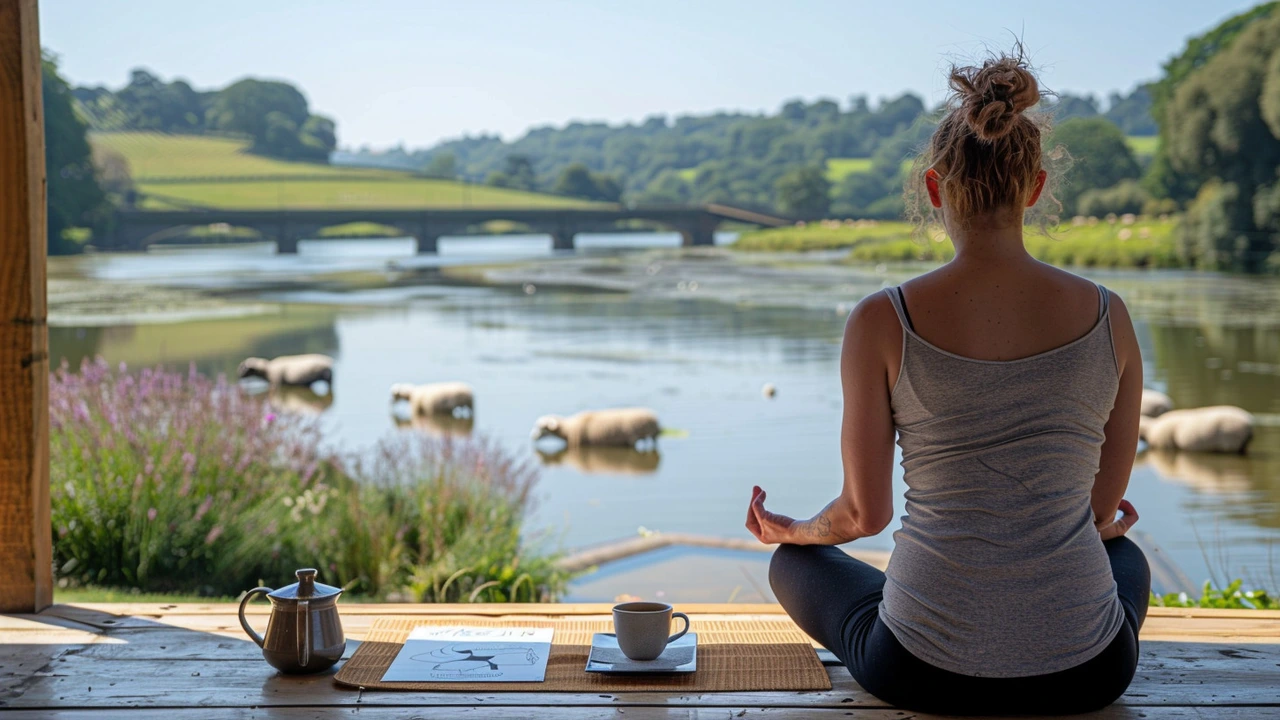
Progressive Muscle Relaxation
One of the most effective yet often overlooked methods for relaxation is progressive muscle relaxation (PMR). This technique involves systematically tensing and then relaxing different muscle groups in the body. Developed by Dr. Edmund Jacobson in the early 20th century, PMR is based on the premise that physical relaxation leads to mental calmness. It's a powerful tool to alleviate stress, reduce anxiety, and improve sleep quality.
To get started with PMR, find a quiet place where you won't be disturbed. You may want to lie down or sit comfortably in a chair. Close your eyes and take a few deep breaths to center yourself. Start at your feet—tense the muscles as tightly as you can for about five to ten seconds, then slowly release the tension as you breathe out. Notice the contrast between the feelings of tension and relaxation. Move up to the next muscle group: your calves. Repeat the process of tensing and relaxing. Work your way up the body, focusing on each muscle group in turn—thighs, abdomen, chest, arms, and so on.
The benefits of PMR extend beyond just immediate relaxation. Regular practice can lead to a reduction in overall anxiety levels. A study published in the Journal of Clinical Psychology found that participants who practiced PMR experienced significant decreases in anxiety and stress symptoms.
"Progressive muscle relaxation has been shown to reduce symptoms in patients suffering from various disorders, including insomnia, chronic pain, and high blood pressure," according to Dr. Jacobson.Incorporating PMR into your daily routine can also improve your awareness of physical sensations and help you recognize the early signs of stress, allowing you to address it before it becomes overwhelming.
If you're new to PMR, guided sessions can be particularly useful. Many apps and online resources offer guided PMR exercises that can help you get started. Consistency is key—try to practice PMR at the same time each day, whether it's first thing in the morning or right before bed. Over time, you'll likely find that the process becomes second nature, and you may even start to feel relaxed just by thinking about tensing and releasing your muscles.
For those dealing with specific conditions like chronic pain or insomnia, PMR can be tailored to your needs. For example, focusing more on the areas that hold the most tension or practicing the technique multiple times a day can enhance the benefits. Integrating PMR with other relaxation techniques, such as deep breathing or mindfulness meditation, can further enhance its effectiveness. Remember, the goal is to create a sense of holistic peace and relaxation that permeates all aspects of your life.
Mindfulness Meditation
Mindfulness meditation is a powerful tool that can transform your life by helping you stay grounded in the present moment. Instead of letting your mind wander aimlessly, this technique trains you to focus your thoughts and become more aware of your surroundings and emotions. One of the cornerstones of mindfulness meditation is its ability to reduce stress and anxiety. Numerous studies have shown that regular practice can lead to a decrease in negative thought patterns and an increase in overall emotional well-being.
What sets mindfulness meditation apart is its simplicity and accessibility. You don't need any special equipment or a quiet room to practice. All you need is a few minutes of your time and the willingness to focus on your breath. Start by sitting comfortably, closing your eyes, and taking deep breaths. Pay attention to the rise and fall of your chest, the sensation of air entering and leaving your nostrils. When your mind starts to wander, gently bring it back to your breath without judgement.
An interesting fact about mindfulness meditation is its impact on brain structure and function. Researchers at Harvard University found that practicing this technique for as little as eight weeks can increase gray matter density in brain regions associated with memory, learning, empathy, and emotional regulation. This change supports enhanced cognitive function and emotional resilience, making it easier to navigate life's challenges.
"Mindfulness meditation isn't just about achieving a state of calm; it's about fostering a state of mental clarity and emotional balance," says Jon Kabat-Zinn, a renowned mindfulness teacher and the founder of the Mindfulness-Based Stress Reduction (MBSR) program.
If you're new to mindfulness meditation, guided sessions can be particularly helpful. Many apps and online platforms offer guided meditations led by experienced practitioners who can walk you through the process. These sessions range from just a few minutes to longer, more in-depth practices, allowing you to choose what fits best into your daily schedule. Consistency is key, so try to set aside a specific time each day to practice.
The benefits of mindfulness meditation extend beyond mental health. Physical health can also improve significantly. Regular meditation has been linked to lower blood pressure, improved sleep quality, and even a strengthened immune system. The practice encourages a relaxation response, counteracting the body's stress response and promoting a sense of calm and well-being.
To enhance your practice, consider incorporating mindfulness into everyday activities. Whether you're eating, walking, or even doing household chores, try to stay present and fully engage with the task at hand. This can turn mundane activities into opportunities for mindfulness, making it easier to integrate the practice into your life.
Mindfulness meditation is not a quick fix but a lifelong journey. The more you practice, the more benefits you will experience. With patience and persistence, you can develop a greater sense of awareness, reduce stress, and improve your overall quality of life. Remember, mindfulness is about progress, not perfection. Embrace the journey and let go of the need for immediate results.
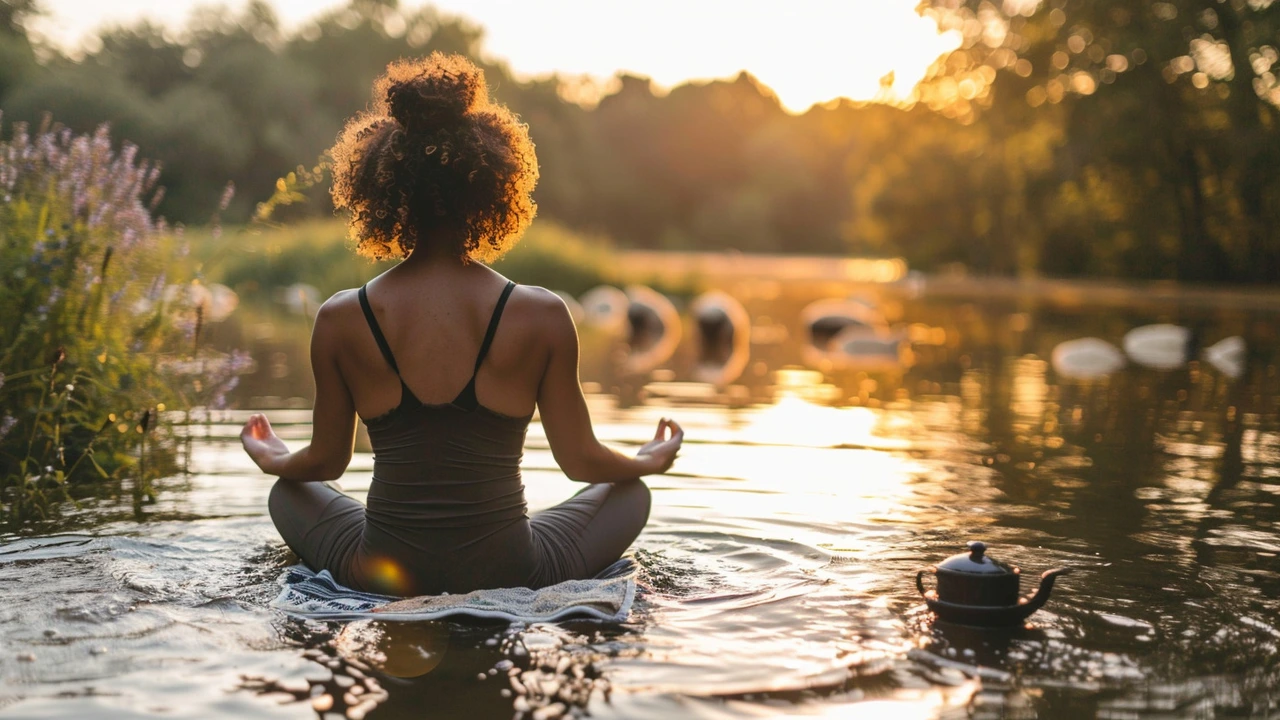
Guided Imagery
Guided imagery is more than just a relaxation technique; it's a powerful method that taps into the mind's ability to influence the body. This technique involves using mental images that you can visualize to bring about a state of calmness and relaxation. Think of it as a mental escape that allows you to transport yourself to a peaceful location or situation, which in turn helps to reduce stress and anxiety.
The basics of guided imagery are simple but effective. You begin by finding a quiet and comfortable space where you can sit or lie down without distractions. Close your eyes and take a few deep breaths. Then, visualize a scene that is serene and comforting to you. This could be a beach with gentle waves, a forest with rustling leaves, or even a tranquil garden with blooming flowers. The key is to immerse yourself fully in this mental image, engaging all your senses to make the scene as vivid as possible.
For example, if you choose a beach scene, imagine the feel of the soft sand beneath your feet, the sound of the waves gently crashing against the shore, the salty smell of the ocean air, and the warmth of the sun on your skin. The more detailed and immersive the experience, the more effective the technique will be. Research suggests that guided imagery can help lower blood pressure, reduce pain, and improve overall mental health. In fact, a study published in the Journal of Psychosomatic Research found that guided imagery significantly reduced stress levels in participants.
Dr. Martin Rossman, a pioneer in the field, once said, "Your mind can be your best friend or your worst enemy. Guided imagery allows you to use your mind to support your health by engaging your creativity and imagination."
There are many ways to practice guided imagery. You can follow a pre-recorded session where a guide walks you through the imagery, or you can create your own script that suits your personal preferences. Many apps and online resources offer guided imagery sessions tailored to specific needs, such as managing anxiety, improving sleep, or enhancing focus. Personalizing your guided imagery practice can make it more effective. Start with short sessions of about 5-10 minutes and gradually increase the duration as you become more comfortable with the practice.
To make the most out of guided imagery, it helps to practice regularly. Think of it as a mental workout; consistency builds strength and resilience. Set aside a few minutes each day to engage in this practice. Over time, you may notice a significant improvement in your ability to manage stress and relax more deeply. Guided imagery is a versatile and accessible technique that can be practiced anywhere, making it a valuable tool in your relaxation toolkit.

